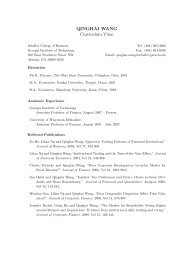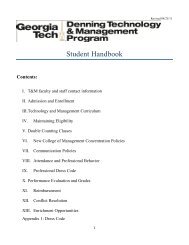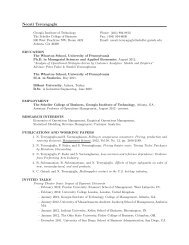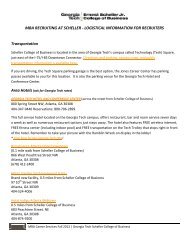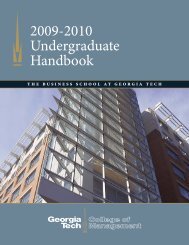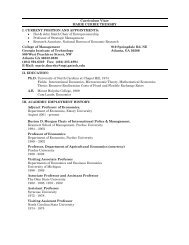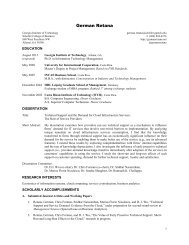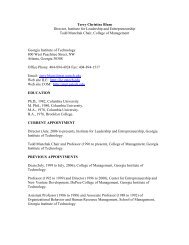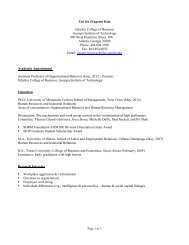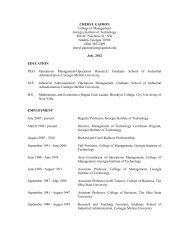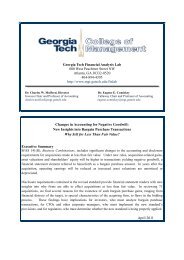Mars-Venus Marriages: Culture and Cross-Border M&A
Mars-Venus Marriages: Culture and Cross-Border M&A
Mars-Venus Marriages: Culture and Cross-Border M&A
You also want an ePaper? Increase the reach of your titles
YUMPU automatically turns print PDFs into web optimized ePapers that Google loves.
For computing abnormal returns, we use the market-adjusted returns approach – i.e.<br />
the simple excess of stock returns over market returns 14 . Table 3 presents the summary<br />
statistics for the BHARs of the acquiring company over different windows. Since data is not<br />
available for all acquiring companies for the entire 36-month post-merger period, the number<br />
of observations decline as the length of the window increases. One trend evident in Table 3 is<br />
the negative performance of the median acquirer vis-à-vis its country index, though the<br />
average BHARs are positive owing to large gains by the “winners”.<br />
In Panel A of Table 4, we present the summary statistics for the key explanatory<br />
variables in our study, the Hofstede measure of cultural distance. Table 4 (Panel B) shows the<br />
five country pairs with maximum similarity in culture <strong>and</strong> the five pairs with most dissimilar<br />
cultures. We provide the Hofstede cultural distance measure for these ten country pairs. In<br />
our sample, Australia <strong>and</strong> United States have the most similar cultures, while Sweden <strong>and</strong><br />
Japan have the most dissimilar cultures.<br />
In Table 5 Panel A, we present the results of our regression of long-term performance<br />
on various independent variables. The dependent variable is the BHARs of acquiring<br />
companies over 36 months. The explanatory variables are the various deal-specific, economic<br />
<strong>and</strong> cultural country-level variables. The variables used in the regression analysis have been<br />
discussed previously <strong>and</strong> are also presented in summary form in Appendix I. We use effective<br />
year fixed-effects to control for all time-related factors (e.g. macroeconomic conditions,<br />
merger waves etc.) One major challenge in studying the determinants of cross-border M&A<br />
performance is to satisfactorily control for country-specific effects which are not related to<br />
our variables of interest. In our OLS regressions, we have a common problem arising in<br />
regressions involving cross country regressions. While we include several country-level<br />
variables, there may be many unknown country specific variables that are difficult to control<br />
for. In order to minimize this problem, we use clustered multivariate regressions with robust<br />
st<strong>and</strong>ard errors <strong>and</strong> target country <strong>and</strong> year fixed effects. Our specifications account for<br />
14<br />
In our robustness checks, we also use the Fama-French factors to adjust for risk for the US<br />
acquirers.<br />
14



